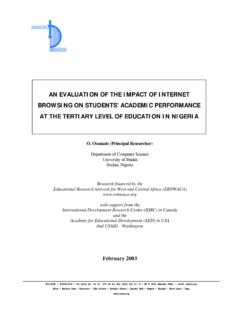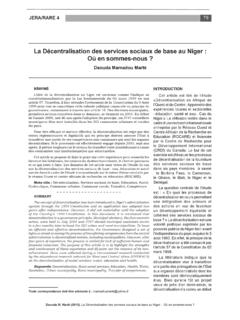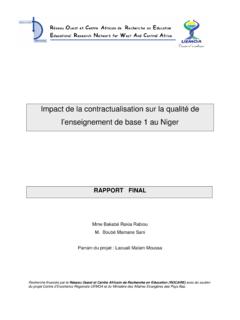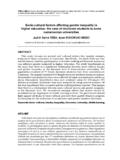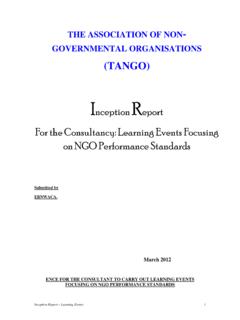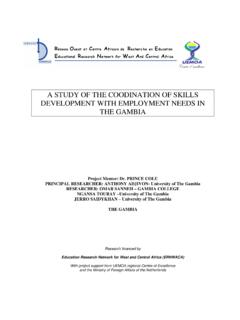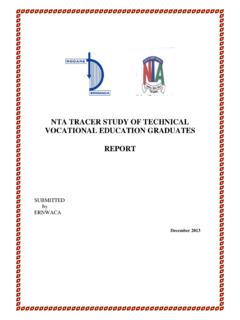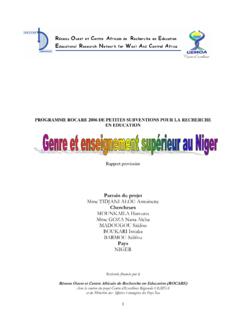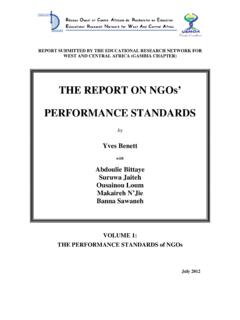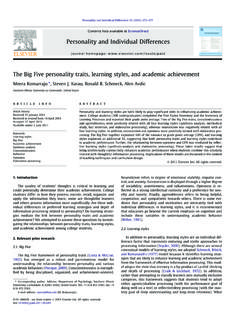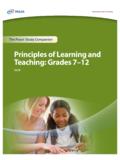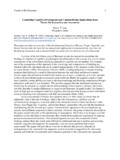Transcription of Perceptions of learning: Chapter 3 - ROCARE
1 Chapter 3 Perceptions of learning : Principles and practices in ICT integrated classroomTh r se MUngAh shALO tChOMb and learning in the 21st century, an ICT-driven age, are undergo-ing innovations as a result of the changing demands in the education en-terprise. Classrooms have become more inclusive with respect to the diverse needs of gender, cultural and individual differences. Also classrooms have become largely ICT integrated and the run is towards effective use of ICT materials to enhance learning and teaching . With these changing demands new learning needs have developed for the different education levels, new ways of designing learning tasks have also evolved and totally different ways of teaching and evaluating learning are being celebrated.
2 These changing dynamics of classroom situations have also made way for evolving teacher and learner interactive behaviour and strategies. Accordingly, emphasis is being laid on specific learning theories that are cognitively oriented, ad-dressing, in teaching , new ways of perceiving learning behaviours and learn-ing strategies. IntroductionPerceptions about learning and teaching in sophisticated 21st century classrooms are fast changing to deal with the integration of ICT assis-ted pedagogy, inclusion of persons with disabilities and other differences in regular classrooms.
3 Because of the emergence of innovations to enhance teaching and learning today, teachers across the education spectrum need to acquire and internalize effective and usable skills in managing ICT in tea-ching and learning . Conscious of this diversity in the 21st century classroom, the following guide underscores various Perceptions of learning and highli-ghts certain principles and practices. It is meant to make you an informed, dynamic and innovative teacher who is able to: Reflect on different types of learning and the ensuing principles to guide your understanding and practices in ICT integrated classrooms.
4 Familiarise yourself with knowledge about cognitive skills and learning strategies. Plan, implement and evaluate learning in an ICT assisted curriculum Manage effectively the human and material resources for effective learning using ICT. Enable the learner to use ICT to maximize concepts, skills and processes ac-quired from his/her learning . Use ICT to develop inquisitive, inquiring, research and curious minds leading such learners to be creative, cultivate independence of thought to exploit learning opportunities. To acquire and internalize effective and usable skills in managing ICT assisted classrooms for quality learning outcomes (Eadie, 2001; Reynolds & Wessels, 2001).
5 Concept of learning needs, and tasks across the education spectrum: Primary, secondary and universityUnderstanding today s classroom for effective practice largely depends on what the teacher conceives of as learning needs and tasks across the educa-tion spectrum. Even though learning remains the same across all education-al levels, usually, differences set in depending on what needs and tasks are emphasized at each level. This means that for effective practice, depending on needs, different tasks are designed to achieve learning . Across the educa-tion board, what matters is where and what is emphasized.
6 learning needs define learning tasks and then suggest the global learning outcomes that we achieve at the end of a lesson. Biological age also determines learning tasks for effective learning across the spectrum. Also important is the fact that the teacher s philosophy or idea of what learning is determines his teaching and management of classroom resources, differences and interactions. For example:At the primary level, the learners cognitive capacities are less advanced. The learning task is more the acquisition and the transfer of basic knowledge and skills.
7 The primary school teacher may view learning simply as a proc-ess of knowledge transmission and acquisition. Here teaching and learning tasks are more transmissive and acquisitive. To the pupils at this level, it may require much doing such as listing, labelling or naming, counting and cat-egorising of objects. The teaching - learning process is more the secondary level, the learners ought to have more advanced cognitive strategies, memory, manipulative skills and abilities, motor skills and high intellectual skills. Their cognitive and intellectual advances even including social gains suggest that the students now need quite different learning tasks, usually to facilitate learning that may be conceived as not just acquiring new knowledge and skills but also interacting and making arguments about what is learned.
8 learning needs at this level go beyond acquisition to constructive argument and advanced interaction with the learning environment. The de-signed tasks must meet the needs of the learners. learning needs a platform that is interactive, manipulative, argumentative and highly intellectual. The students do not only depend on the transmitted knowledge by you but also largely depend on the product of their arguments, judgments, and conclu-sions, however, guided by you the educator. At the university level, learners are either transitioning to adulthood or are already adults.
9 learning has further metamorphosed to not just making ar-guments as in secondary school but now considers logic and hypothetical thinking abilities. You need to be aware of these advances to be able to design learning tasks facilitated by ICT that meet the needs of students at this level. There is a lot of independent work, logical reasoning and of course peer tutoring. These are all indicators of effective strategies at the university level. You transcend from the role of facilitator and guide to a partner in the process of learning and acquiring new knowledge, skills and abilities.
10 That is why seminars, research and projects become important backdrops for university studies, teaching and learning . Activity 1 for reflections 1. In an ICT integrated classroom, how can you ensure that learning is truly an interaction between the learner, the learning task, the context, and the learning processes? 2. How can you with the use of ICT help learners focus on learning rather than on the learning task?3. To what extent can you use acquisition learning built on doing to increasing cognitive capacity? Changing views of learning as a function of ICT assisted pedagogyPerspectives about learning have changed and evolved over the years from pre-Formationist ideologies to classical orientations and further unto mod-ern perspectives characterised by exigencies of Information and Communi-cation Technologies (ICT) and other impinging factors of the 21st century based on social constructivist frame work.
